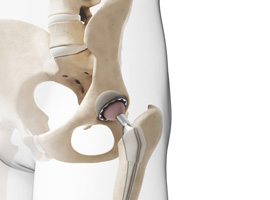In any product liability case, whether artificial hip, knee, transvaginal mesh, or faulty drug, medical record retrieval and medical records review are important processes, and the defendants will want to see the complete medical file of the injured person. Typically the defense would ask for the entire medical history with a view to finding something that could be of use to them.
A recent lawsuit associated with Stryker LFIT V40 femoral head is a significant one. The suit was filed by an Alabama man in the U.S. District Court for the Northern District of Alabama. He seeks compensatory as well as punitive damages in excess of $75,000, claiming that he suffered serious injuries after being implanted with the Stryker LFIT component. Here’s a peek into the history of this defective component.
Stryker Corporation had, in the past recalled two of their metal hip replacement systems – the Rejuvenate Modular and AGB II Modular-Neck Hip Stems in 2012. They had to face hundreds of lawsuits filed by people who had been implanted with these systems, and as a result suffered serious issues such as premature implant failure and metal poisoning. On August 29, 2016, Stryker recalled certain sizes of its LFIT Anatomic CoCr V40TM Femoral Heads that were manufactured before the year 2011. This recall was after getting numerous complaints of taper lock failure that could cause disassociation of the femoral head from the hip stem, and excessive metallic debris.
Many patients had been injured by the time the recall came. People were not properly warned of the risks, and many lawsuits were filed against Stryker alleging that the company was negligent in failing to address the issues with the LFIT V40.
The Stryker LFIT Anatomic CoCr Femoral Heads are used with many hip implant femoral stems including the following:
- Stryker Accolade TMZF
- Stryker Accolade 2
- Meridian
- Citation
The company had claimed that the femoral heads were designed to minimize the risk of recurring dislocation, and maximize the patient’s hip movement and stability. The technology aimed at reducing friction thereby minimizing wear and tear of the component. Unfortunately, the same technology seemed to have increased the risk of metal wear and tear, tissue damage, hip implant failure and immobility.
The defective design of this product could result in the following injuries, which need to be established with the help of medical documentation and review.
- Hip implant failure
- Metal poisoning
- Disassociation of the femoral head from the stem
- Tissue damage
- Pseudotumors
- Bone damageor osteolysis
Patients could experience severe pain, difficulty walking, swelling and inflammation, raised levels of chromium and cobalt in the blood.
The plaintiff mentioned at the beginning of this blog underwent total hip replacement surgery on April 2010. The surgeon implanted Stryker Accolade TMZF hip stem and the LFIT Anatomic V40 femoral head. Unfortunately, the joint replacement surgery failed. Due to fretting and corrosion between the femoral stem and femoral head junction, namely the taper lock area. Research studies show that when a hip implant fails, pockets of fluid and swelling develop. When at least one cobalt/chromium component was present in a hip implant, there was an increased risk of wear and tear. The Alabama plaintiff suffered damage to the hip joint, pain and inflammation along with higher than normal levels of cobalt and chromium in his blood. In addition he suffered from soft tissue damage, severe pain, limited mobility and discomfort. He had to undergo a revision surgery in March 2015, a procedure that is often more complicated and risky than the original surgery. He blames the Stryker company on the following counts:
- Stryker did not adequately study their component before releasing it on the market
- The company failed to provide adequate warnings regarding the risks involved
The Stryker company is sued on counts negligence, liability, breach of warranties, fraudulent misrepresentation, fraudulent inducement and suppression, and fraudulent concealment. The plaintiff’s wife also claims loss of consortium.
A liability case such as the above calls for product liability medical record review for which most lawyers depend on medical review services. This will help identify which components were used in the hip replacement surgery, and whether patients have a case against the manufacturer of the particular product.




